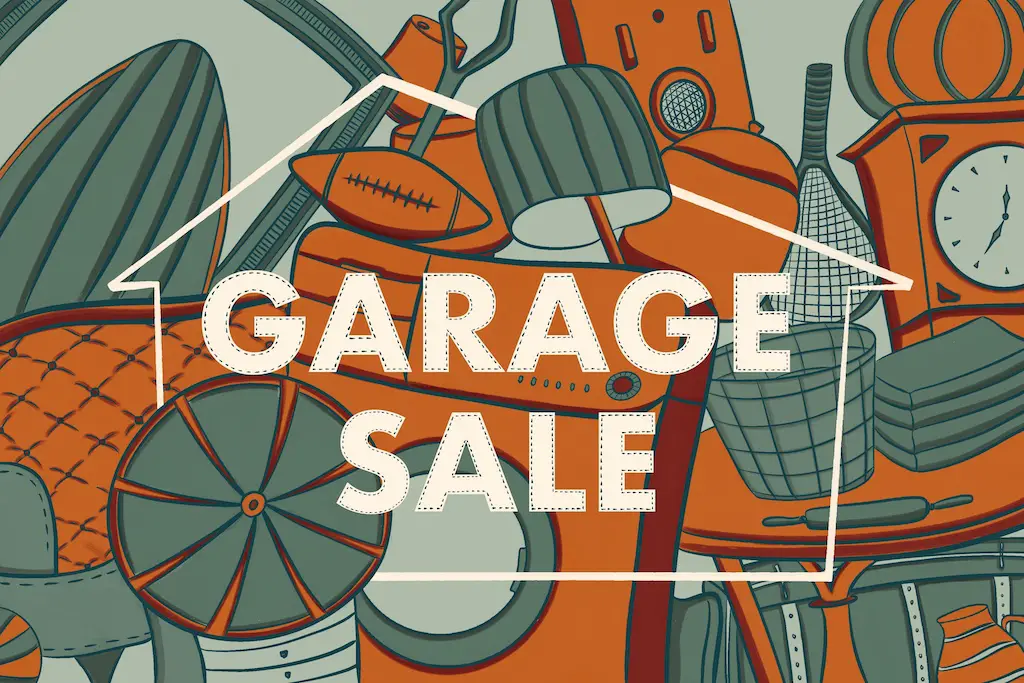“Is there any way I can pay one quarter for this instead of three?”
I look up at the lady who is holding my sister’s childhood jewelry box and a bag of change. Her husband lingers behind her toting a handful of items that she had also haggled down to only a few quarters, despite their already cheap prices.
I shrug and count up the total of all her items. So far, she’s bought some rings, a few dresses, a pair of shoes, three snow globes, a Styrofoam head (Why do we have a Styrofoam head?) and a jewelry box. Her total is a whopping $2. She leaves — satisfied — while I’m feeling somewhat played, but also content that I profited from things that were just collecting dust in the basement.
Garage sales are a win for everyone, whether you’re looking to get rid of a stockpile of junk that’s been occupying a corner of your closet, or you’re on a mission to find thrifted items — sometimes even hidden gems — that cost no more than a pack of gum.
Before deciding to have my first garage sale a few summers ago, I was entirely unaware that garage sale-ing involved more than just setting your old junk out on the front lawn and calling it a day. As I asked around about how to start my own sale, I quickly realized that attending garage sales is a revered activity for many people in my small town — and that I’d have plenty of customers if I just played my cards right.
Whether you’re looking to start your own sale or you’re just curious about the garage sale-ing lifestyle, here is a glimpse into small town garage sale culture, as well as tips you must heed to have a successful one.
1. Advertising is key
First and foremost, garage sale culture would not exist without the local newspaper. Purchasing an ad in the paper, I discovered, was the ultimate way to attract the attention of the garage sale fanatics — the ones who wake up every Friday and Saturday morning to arrive at the sales by 5 a.m. in hopes of buying the best items before they are sold.
Though placing an advertisement in the paper is an excellent means to spread the word about your sale, it isn’t the only way.
Buy some garage sale signs and post them around your town. Remember to include the date, address and time of your sale. Garage sale goers will often drive around town in search of sales they may have missed in the paper.
2. If you think something isn’t going to sell, chances are it probably will
As customers came and went, I couldn’t help but marvel at the unexpected items that sold first.
“Sell anything and everything,” an expert at hosting garage sales said to me. “I promise most things will be sold by the end of your sale.”
So that’s exactly what I did. To my astonishment, I sold all 20 of my abandoned snow globes that had been banished to a storage bin years ago, despite the little voice in my head that wondered, “Why would anyone want my old snow globes?”
And I was equally as surprised to discover that an old, decaying bottle of olive oil was also a hot ticket item, along with a few planks of wood and a box of rusty forks. Moral of the story: People will buy your things if they hardly cost anything — which brings me to my next tip.
3. When in doubt, price items for cheap
When going about pricing for your sale, it’s important to remember that the purpose of garage sales is not necessarily to make a boatload of money (though that’s certainly a bonus), but to clean out your house and get rid of your old stuff.
The reason why people avidly hunt for garage sales is because the prices are so cheap that they’re practically purchasing items for free. The higher the prices at your garage sale, the more likely it will be that patrons will leave shortly after they arrive — and empty-handed.
This being said, don’t let your unbeatably low prices convince you that your customers won’t try to lower your prices even more. People who frequently attend garage sales are on top of their game when it comes to buying your items at the cheapest possible price — especially the “big ticket items” such as a $20 couch or a kitchenware set for $10.
4. The earlier the better
Typically, garage sales will begin at around 6 or 7 a.m., but you should prepare to begin much earlier as many garage sale attendees will arrive an hour prior to the sale’s start and sit on your front lawn, restlessly awaiting the opening of your garage. Those who arrive early mean business and they are usually in search of more expensive items such as furniture or a closetful of clothes.
If your sale starts too late, customers will find what they are looking for at other garage sales and they’ll drive right past yours.
Takeaway
If you’re looking to clear out the clutter in your closets and maybe make a bit of a profit, having a garage sale is the way to go. If you have many years worth of unused items, there will be someone out there who’ll want them, regardless of how strange and useless the stuff in your junk drawers may seem.

















